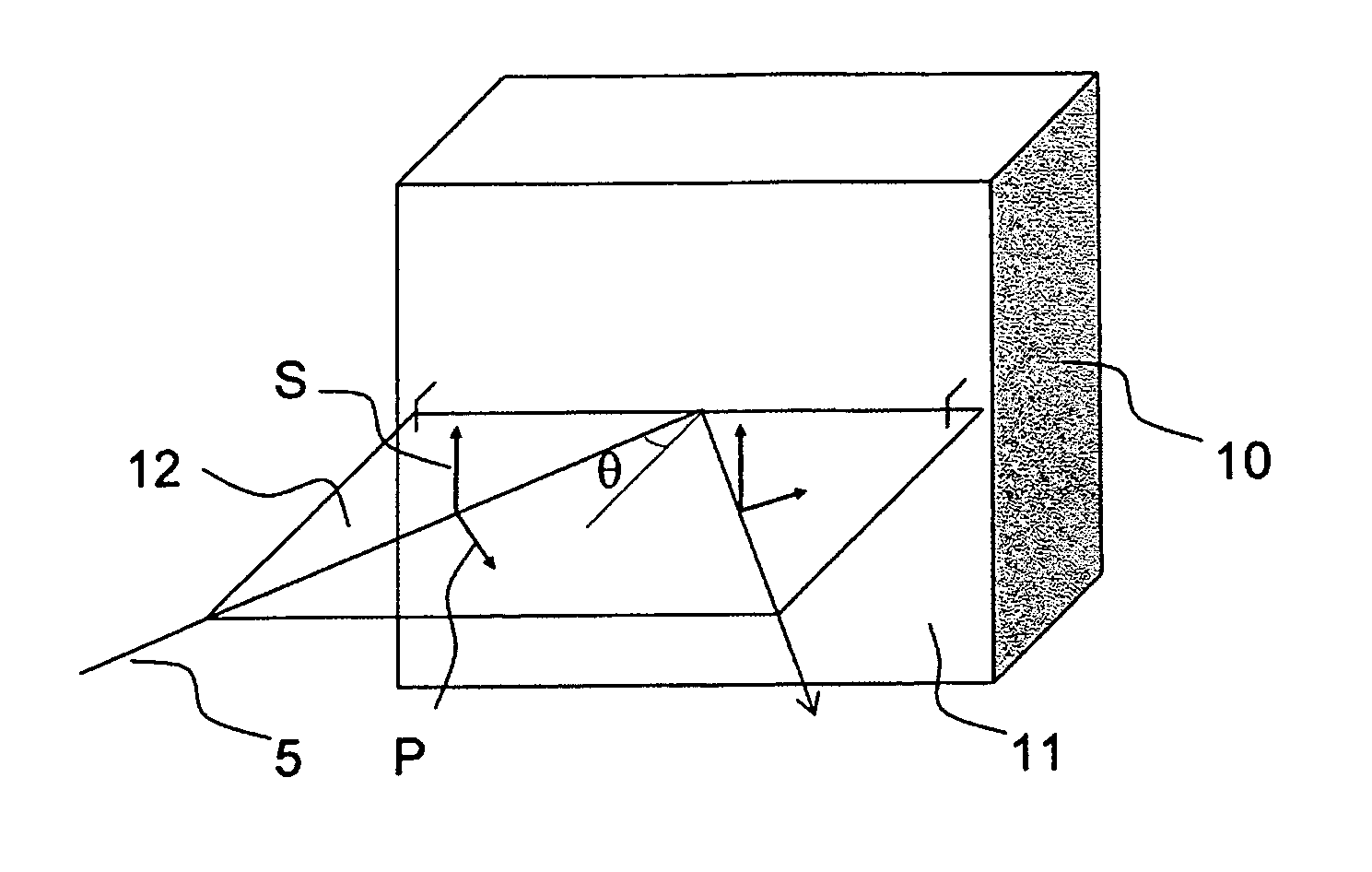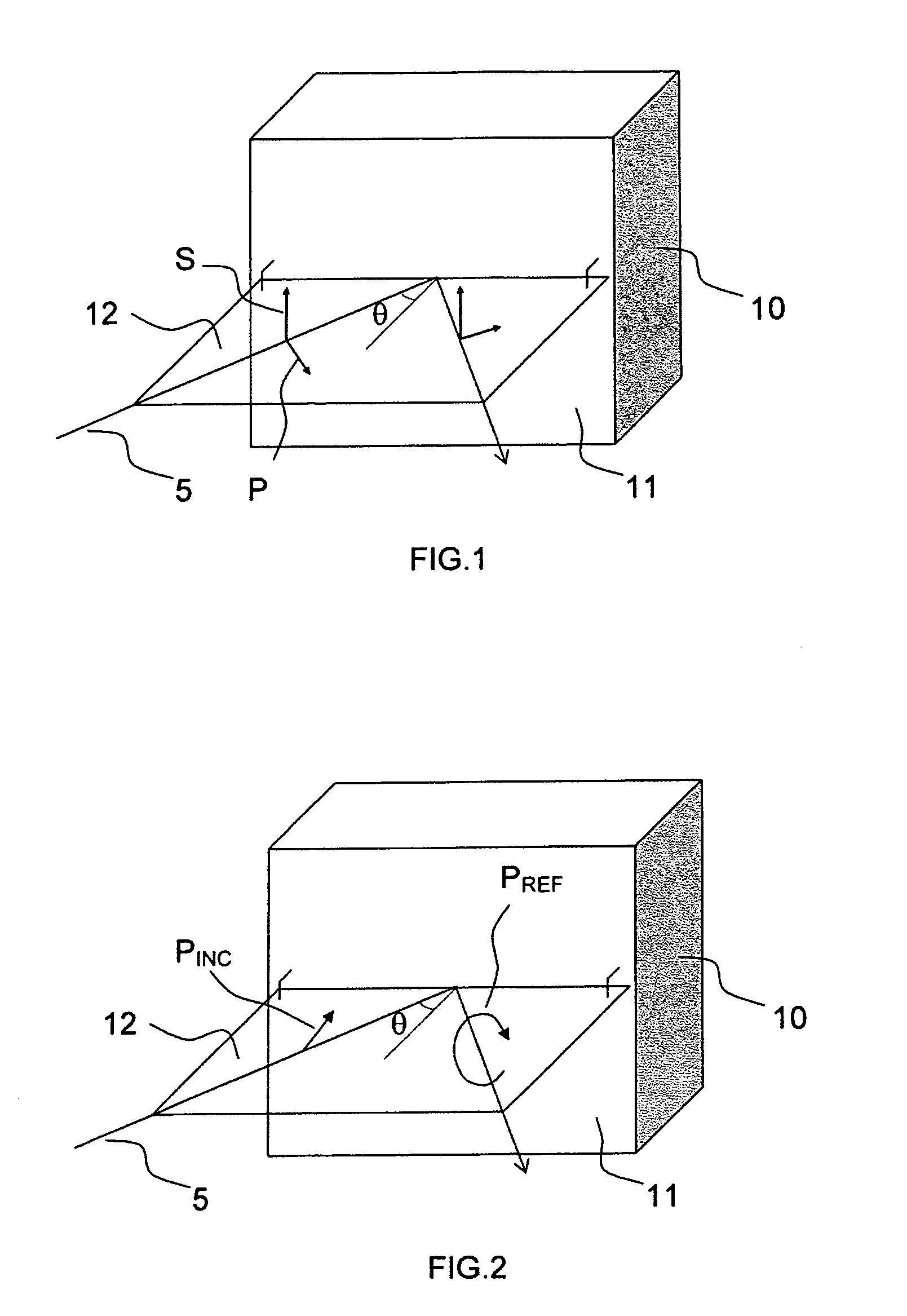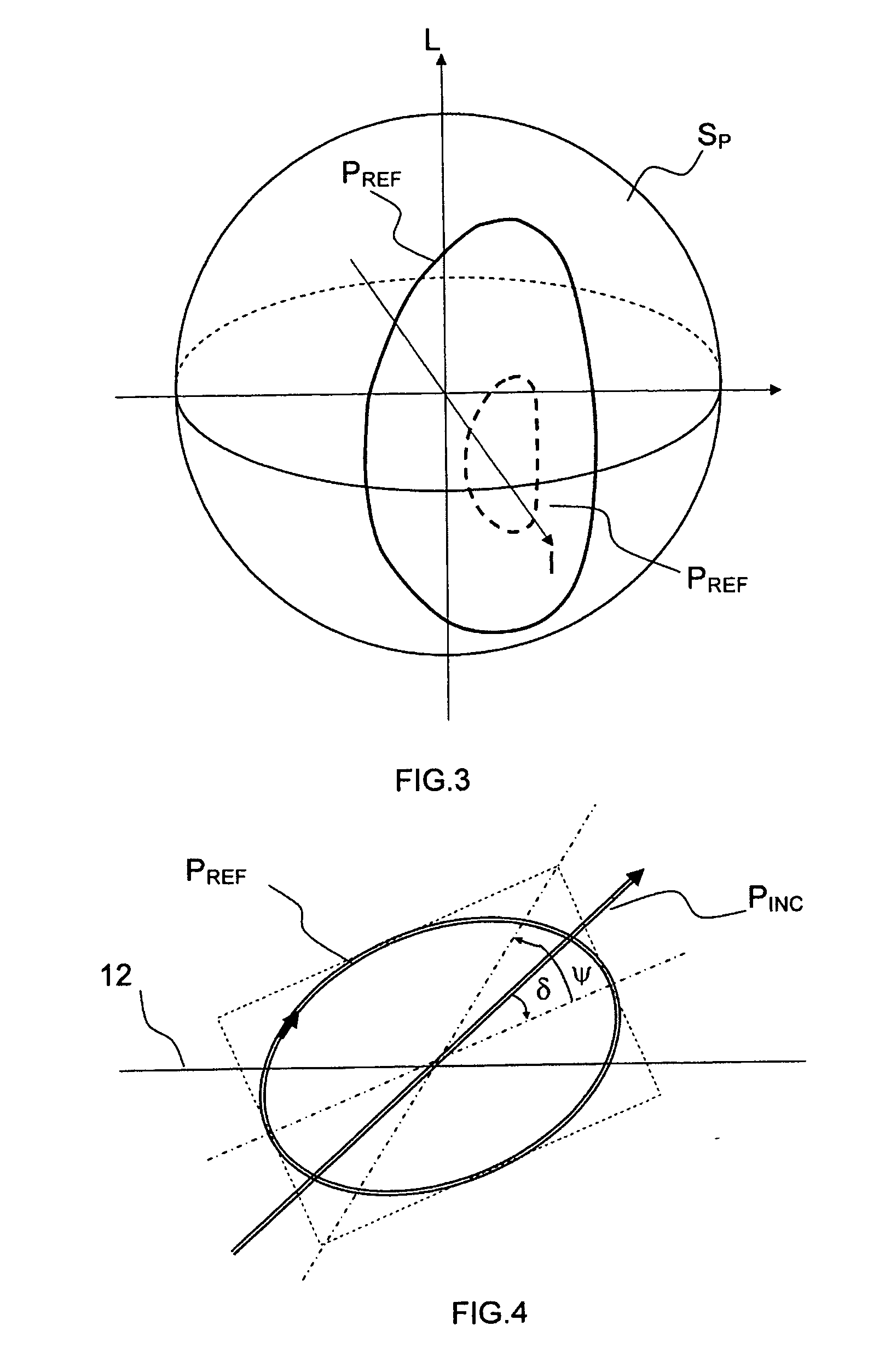Device for detecting non-metallic objects located on a human subject
a technology for detecting non-metallic objects and human subjects, applied in the direction of geological detection using milimeter waves, using reradiation, instruments, etc., can solve the problems of no sophisticated measuring instruments and extremely quick completion of measurement, and achieve the effect of simple design
- Summary
- Abstract
- Description
- Claims
- Application Information
AI Technical Summary
Benefits of technology
Problems solved by technology
Method used
Image
Examples
first embodiment
[0073] The first means 41 of measuring the polarimetric characteristics of the reflected signal are of different types. When the polarization sent is kept constant, the means 41 are of ellipsometric type, namely that, they allow the main orientation and ellipticity of the received polarization to be measured. There are then various possible techniques for carrying out this measurement. In a first embodiment, the analysis system is said to be “with rotating analyzer”. It is formed by a rotating polarizer placed in front of an intensity detector and means of rotating said polarizer. For example, a microwave horn connected to a microwave guide constitutes a good polarizer, this guide is then connected to a rotating joint providing the swiveling link between the guide and the coaxial connector linked to the intensity detector. The guide and the horn are driven rotation-wise by a direct current motor and the absolute angular position of the horn is measured by an incremental encoder. The...
second embodiment
[0074] The rotating analyzer solution has the advantage of being simple to implement at low cost, but this method has the drawback of involving moving parts. In a second embodiment, the complex amplitude of two orthogonal polarizations that make up the polarization to be analyzed is measured. For this, a so-called orthomode horn is used which gives, on two separate channels, the two vertical and horizontal incident polarizations. Having these two signals, on the one hand each amplitude and then the relative phase shift between these two amplitudes are measured. The measurement can then be done at a repeat frequency measured in kilohertz.
[0075] When the polarization sent varies over time, for example when the source or the sending horn comprises means for sending different combinations of parallel and perpendicular polarizations varying over time, then the receiving horn is preferably a horn that can receive a polarization oriented at 45° from the reflection plane. By analyzing the v...
PUM
 Login to View More
Login to View More Abstract
Description
Claims
Application Information
 Login to View More
Login to View More - R&D
- Intellectual Property
- Life Sciences
- Materials
- Tech Scout
- Unparalleled Data Quality
- Higher Quality Content
- 60% Fewer Hallucinations
Browse by: Latest US Patents, China's latest patents, Technical Efficacy Thesaurus, Application Domain, Technology Topic, Popular Technical Reports.
© 2025 PatSnap. All rights reserved.Legal|Privacy policy|Modern Slavery Act Transparency Statement|Sitemap|About US| Contact US: help@patsnap.com



